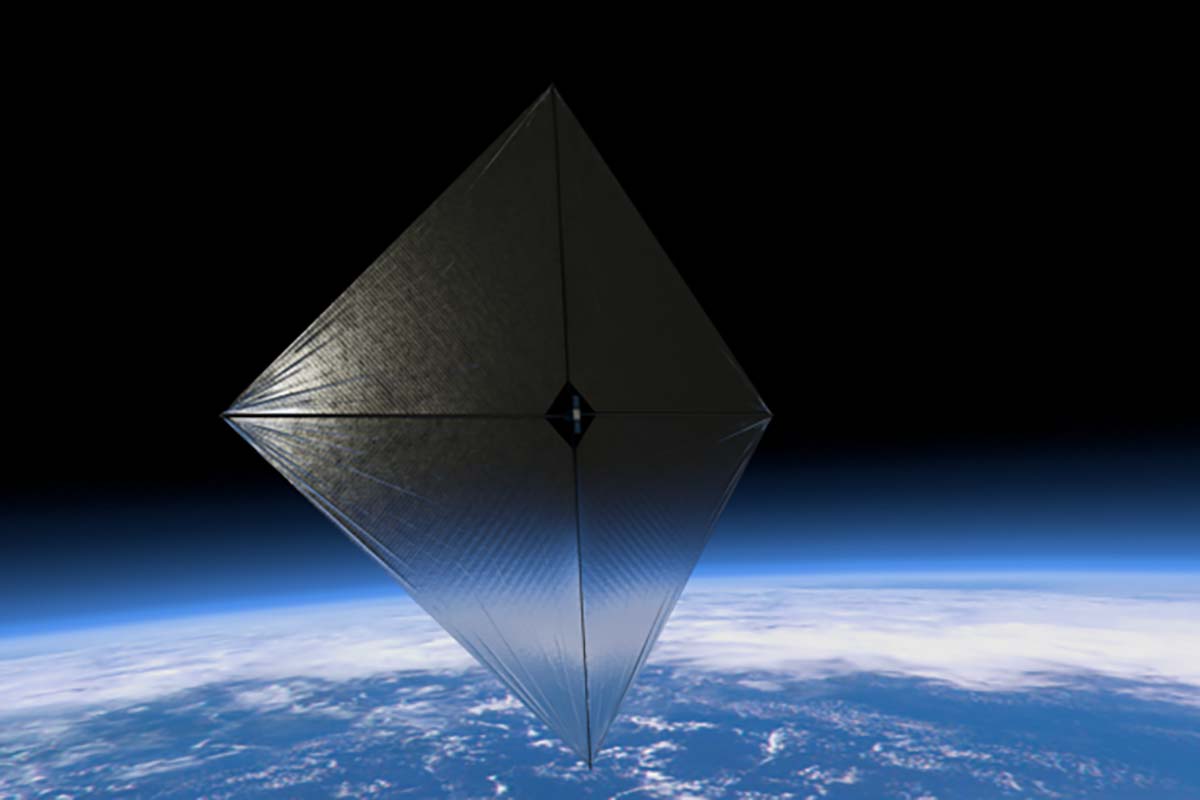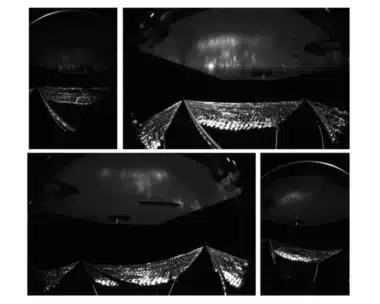NASA’s Advanced Composite Solar Sail System (ACS3), an experimental spacecraft designed to harness sunlight for propulsion, is facing technical challenges after a bent boom caused it to lose orientation and tumble uncontrollably in space. Launched in April 2024, the mission aims to demonstrate solar sail technology, which could revolutionize deep space travel by reducing the need for traditional fuel.
NASA’s Solar Sail Mission Faces Challenges as Spacecraft Tumbles Uncontrollably

NASA’s Advanced Composite Solar Sail System (ACS3), an innovative mission to test solar sail propulsion, is facing significant challenges after the spacecraft lost orientation and began tumbling through space.
Engineers are working diligently to address the issue, which seems to stem from a structural problem in one of the spacecraft’s critical booms. Launched in April 2024, this mission is a key step in developing propulsion technology that uses sunlight to power spacecraft, but the current malfunction threatens to delay critical tests.
Mission Objectives and Early Setbacks
The ACS3 spacecraft, which is roughly the size of a microwave, was launched aboard Rocket Lab’s Electron rocket from New Zealand with the primary goal of demonstrating how solar sail technology could propel spacecraft without the need for traditional fuel. This concept leverages the pressure from photons—particles of light from the Sun—acting on large, reflective sails, much like how wind propels a sailboat. This form of propulsion could dramatically reduce the cost and complexity of deep space missions by eliminating the need for bulky fuel supplies.
After the launch, the mission proceeded smoothly until the deployment of the spacecraft’s four reflective sails, which form a 30-foot-wide square structure. The sails are supported by composite booms—lightweight yet strong beams designed to keep the sails stretched and stable. However, shortly after the unfurling, NASA engineers noticed that one of the booms had developed a slight bend, potentially compromising the spacecraft’s structural integrity. According to NASA’s update, “the primary objective of the Advanced Composite Solar Sail System demonstration is to test deployment of the booms in space to inform future applications,” but the bent boom has caused a significant delay in reactivating the spacecraft's systems.
The bent boom likely occurred during the initial deployment of the sails when the booms were pulled tight against the spacecraft. NASA has noted that "analysis indicates that the bend may have partially straightened over the weeks since boom deployment, while the spacecraft was slowly tumbling." Still, the malfunction has left the spacecraft without proper orientation control, forcing engineers to switch off the attitude control system, which stabilizes the spacecraft. Without this system, ACS3 is now uncontrollably spinning in space, which complicates efforts to resume normal operations and begin the planned maneuvers that would demonstrate the spacecraft’s propulsion capabilities.

Current Efforts to Regain Control
NASA engineers are currently focusing their efforts on repositioning the spacecraft by adjusting its orientation so that its sails face the Sun directly. This is crucial, as the solar panels and sails must be properly aligned with the Sun to harness its energy efficiently. Until the spacecraft is reoriented, it will remain in "low power mode," a state designed to conserve energy for critical functions like two-way communication with mission control. NASA has emphasized the importance of preserving energy during this phase, stating, “the team is conserving the spacecraft’s energy for priority operations—such as two-way communications with mission control—until its attitude control system is reactivated.”
Once the attitude control system is back online, the spacecraft will regain its ability to stabilize and stop the current uncontrolled tumbling. At that point, NASA engineers will have a better opportunity to assess the extent of the damage to the boom and sail, gather detailed data, and proceed with testing the spacecraft’s propulsion capabilities. The mission team remains optimistic that the technology will work as intended once control is restored, although they are cautious about the current limitations imposed by the malfunction.
Once control is regained, one of the mission’s primary objectives is to test sailing maneuvers using sunlight as the sole means of propulsion. Engineers will angle the sails to alter the spacecraft’s orbit, which could prove revolutionary for future space travel. NASA hopes to collect as much data as possible during this testing phase to further refine solar sail technologies. If successful, these technologies could be applied to future deep space missions, dramatically reducing the costs and increasing the range of spacecraft.
The Future of Solar Sail Technology
The ACS3 mission is part of a broader effort by NASA to develop more sustainable and cost-effective methods of space travel. Solar sail technology has the potential to revolutionize space exploration by using sunlight as a propellant, removing the need for traditional fuel. Theoretically, this propulsion method could allow spacecraft to travel farther and stay operational longer, particularly for missions beyond Earth's atmosphere and into deep space. NASA’s data already shows promise, with the agency stating that “data collected from this flight test has already proven highly valuable, and the demonstration will continue producing critical information to enable future solar sail missions.”
Although the ACS3 mission is currently facing setbacks, it builds on the legacy of previous solar sail missions, such as the Planetary Society’s LightSail 2. Launched in 2019, LightSail 2 successfully gained altitude using sunlight alone, but eventually reentered Earth’s atmosphere and burned up. NASA’s engineers have taken lessons from LightSail 2 and are applying them to ACS3, which they hope will further refine the technology and provide valuable insights into its future applications. The solar sail design used in ACS3 could eventually scale up to much larger systems, with sails covering over 500 square meters—comparable in size to a basketball court.
Looking ahead, NASA plans to use solar sail propulsion for missions that require long-term travel to distant destinations, including future missions to Mars and beyond. These sails could provide a more economical means of propulsion, reducing both fuel costs and mission weight. As the mission team works to stabilize the ACS3 spacecraft, the long-term benefits of solar sail technology remain clear: the ability to travel deep into space powered solely by sunlight could unlock new possibilities for exploring the cosmos.
While the ACS3 mission continues to face technical challenges, the lessons learned from this mission are already proving valuable. NASA is hopeful that once control is regained, the spacecraft will demonstrate the effectiveness of this innovative propulsion system, bringing humanity one step closer to unlocking the full potential of solar sails in space exploration.


